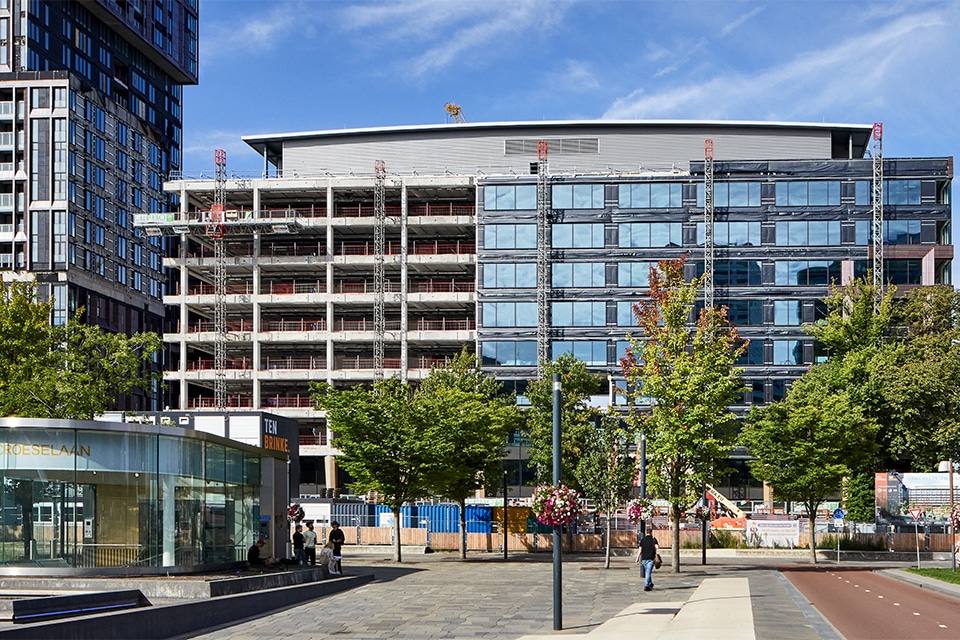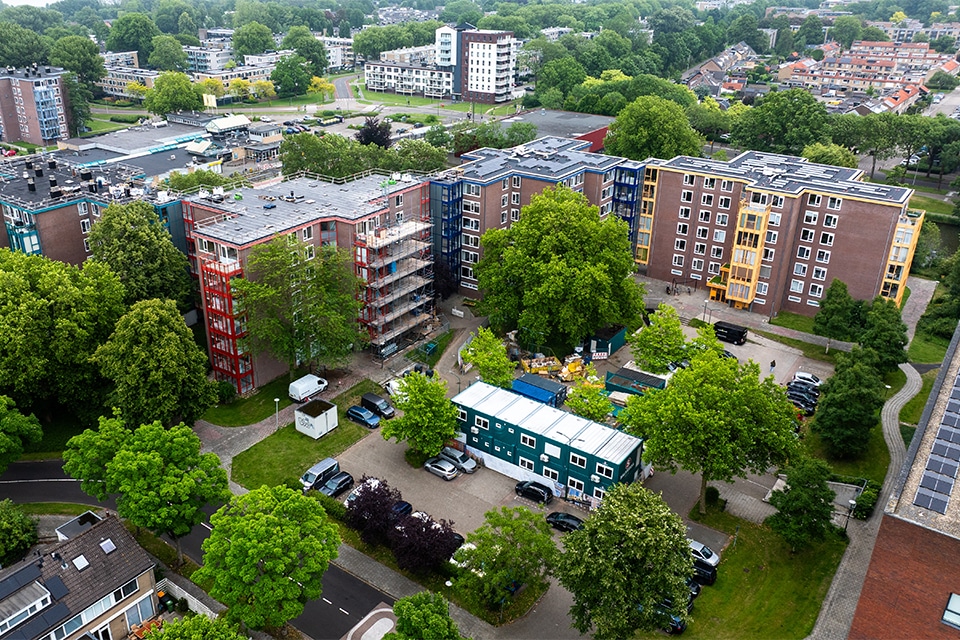
San Rufino: the stylish entrance to Kloosterkwartier
On the grounds of the Convent of the Franciscan Sisters, right in the center of Veghel, a contemporary residential and living area is being developed. Kloosterkwartier consists of several apartment buildings for young and old and for people with and without care needs. Eyecatcher of the plan is San Rufino. This building forms the entrance to Kloosterkwartier and provides space for 41 energy-efficient owner-occupied apartments, approximately 300 m2 of commercial space and a semi-underground parking garage with a communal bicycle shed and 17 parking spaces. San Rufino was realized by Bouwbedrijf van de Ven of Veghel, which adds another impressive business card to its backyard. Thanks to the richly detailed brick facades, large windows and clever layout, the building also fits in nicely with the adjacent Mother House.
San Rufino was realized on the site of the old "zig-zag" and (partially) corner building. "Before the 2022 construction period, we set up the construction site so that we could start our work very energetically after the construction period," says project manager Mark Smaling. "This allowed us to deliver the new building after only 68 weeks and exactly on schedule."
Commissioned by developer Z-enzovoorts BV, Bouwbedrijf van de Ven was responsible for both construction and installation work. "We also provided the coordination for the WKO installation. A hot and cold source were installed on the site, connected to a technology room in one of the plan's other buildings. From here, distribution lines and individual delivery sets provide exactly the right amount of heat and cold." Solar panels are mounted on the roof of San Rufino. The building is also equipped with high-quality insulation, which means that high sustainability scores go hand in hand with low energy consumption.
Building base
San Rufino is the second project that Bouwbedrijf van de Ven was privileged to realize in the Kloosterkwartier. In fact, between November 2019 and December 2020, the Veghel-based construction company has also already built 62 apartments, Smaling says. "San Rufino was completed at the end of February 2024. At the base of this building is a foundation with mortar screw piles, beams and footings. Above this, a semi-underground parking garage was constructed with precast concrete columns and in-situ poured concrete walls and beam floors. Instead of a concrete floor, the parking garage floor is paved with clinker pavement." At the front of the building, about 300 m2 of commercial space was created, over the ground and second floors. The various spaces are vertically symmetrically separated from each other and delivered as shells, awaiting their tenants. "The 41 apartments are furnished from the first (rear) and second floors (front). Here we worked with wide slab floor and roof floors and sand-lime adhesive elements as load-bearing interior walls."
Complex inner-city construction
Biggest challenge during construction was the limited construction site, right in the center of Veghel, Smaling says. "This brought the necessary challenges in terms of construction safety and logistics. In addition, we had to deal with the reception of Ukrainian refugees in the Motherhouse, for which specific safety measures had to be taken at the request of the municipality."
Each apartment is unique
In total, San Rufino has six floors. "Inside the building are an elevator, main stairwell and escape stairwell. Whereas the main structure of each floor is the same, the apartments are ultimately unique." San Rufino was realized on the basis of a purchase/contract agreement, Smaling says. "The contract price was actually paid by the buyers, all of whom were able to contribute their own buyer's wishes. For example, regarding house layout, interior door frames and interior doors, kitchens, plumbing and tiles. Our buyer supervisors successfully coordinated this process."
Striking masonry
Most striking about San Rufino are the masonry facades, in which the architect gave free rein to his imagination. "On the facades, various types and colors of facing bricks alternate," Smaling illustrates. "Moreover, a variety of masonry dressings, protruding and receding facing bricks and various colors of pointing were chosen, creating an exciting but harmonious whole. Exactly as befits an entrance building."
- Client Z-enzovoorts BV
- Architect LA | Architects Engineers
- Contractor Construction company van de Ven (construction and installations)






